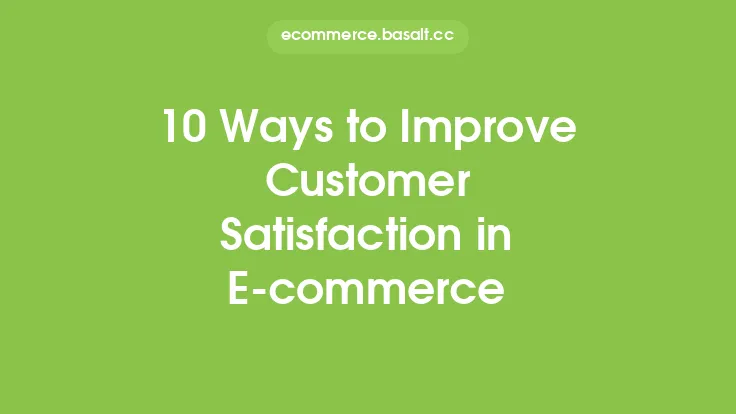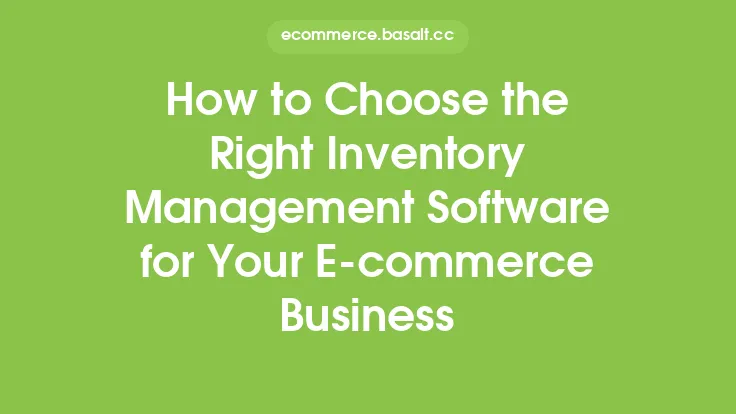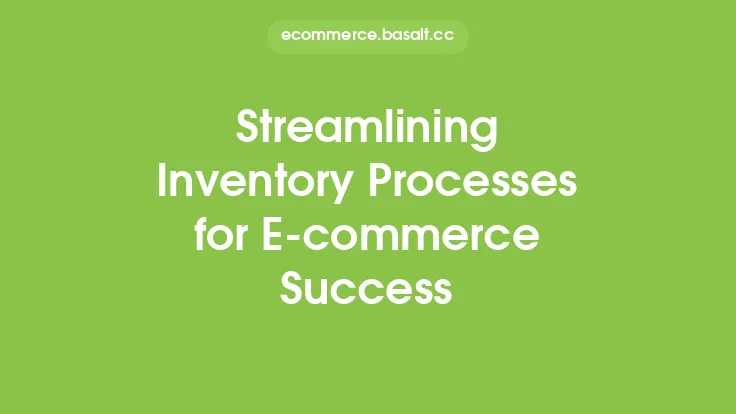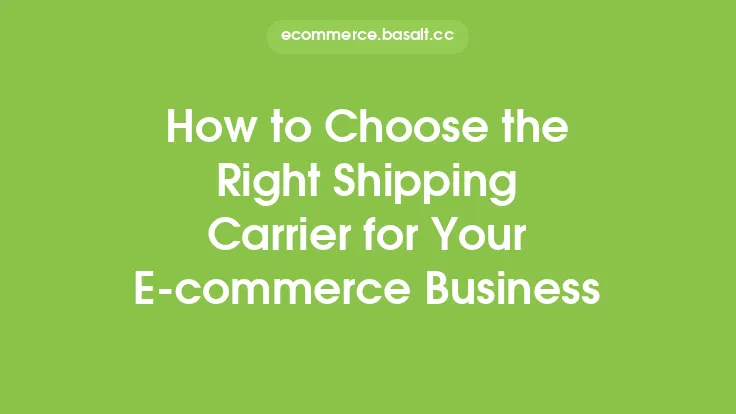In today's fast-paced e-commerce landscape, providing exceptional customer satisfaction is crucial for building a loyal customer base and driving business growth. One critical aspect of achieving this goal is streamlining the e-commerce shipping process. A well-organized shipping process not only ensures timely and efficient delivery of products but also helps to reduce costs, minimize errors, and enhance the overall customer experience. In this article, we will delve into the importance of streamlining the e-commerce shipping process and provide actionable tips and strategies for improving customer satisfaction.
Understanding the E-commerce Shipping Process
The e-commerce shipping process involves several stages, from order receipt to delivery. It begins with order processing, where the seller receives and verifies the customer's order. The next step is picking and packing, where the ordered items are selected, packaged, and prepared for shipping. The package is then shipped to the customer via a chosen carrier, and the customer receives tracking information to monitor the status of their order. Finally, the customer receives their order, and the seller follows up to ensure satisfaction. Understanding each stage of the shipping process is essential for identifying areas of improvement and implementing strategies to streamline operations.
Key Challenges in E-commerce Shipping
E-commerce businesses face several challenges in their shipping operations, including high shipping costs, lengthy delivery times, and poor communication with customers. Other challenges include managing multiple shipping carriers, handling returns and refunds, and ensuring accurate order fulfillment. Additionally, e-commerce businesses must comply with various shipping regulations and laws, such as those related to packaging, labeling, and customs clearance. By acknowledging these challenges, businesses can develop effective strategies to overcome them and improve their shipping operations.
Strategies for Streamlining E-commerce Shipping
To streamline the e-commerce shipping process, businesses can implement several strategies. One approach is to automate shipping operations using software and technology, such as shipping management systems and automated packaging machines. Another strategy is to optimize packaging, using materials that are durable, cost-effective, and environmentally friendly. Businesses can also negotiate with shipping carriers to secure better rates and services, and consider using regional carriers or local delivery services to reduce costs and improve delivery times. Furthermore, providing real-time tracking information and regular updates to customers can help to build trust and improve the overall customer experience.
The Role of Technology in E-commerce Shipping
Technology plays a vital role in streamlining e-commerce shipping operations. Shipping management software, for example, can help businesses to automate tasks, such as printing shipping labels and tracking packages. Other technologies, such as barcode scanning and automated packaging machines, can improve the efficiency and accuracy of order fulfillment. Additionally, data analytics and machine learning algorithms can be used to optimize shipping routes, predict delivery times, and identify areas of improvement in the shipping process. By leveraging these technologies, businesses can reduce costs, improve efficiency, and enhance the customer experience.
Best Practices for E-commerce Shipping
To ensure a smooth and efficient e-commerce shipping process, businesses should follow several best practices. One best practice is to clearly communicate shipping policies and procedures to customers, including estimated delivery times, shipping costs, and return policies. Another best practice is to use high-quality packaging materials that protect products during transit and provide a professional appearance. Businesses should also train their staff on shipping procedures and ensure that they have the necessary skills and knowledge to handle shipping operations effectively. Furthermore, regularly monitoring and evaluating shipping operations can help businesses to identify areas of improvement and implement changes to optimize their shipping process.
Measuring the Success of E-commerce Shipping Operations
To measure the success of e-commerce shipping operations, businesses should track several key performance indicators (KPIs), such as on-time delivery rates, shipping costs, and customer satisfaction ratings. Other KPIs, such as order fulfillment rates, return rates, and net promoter scores, can also provide valuable insights into the effectiveness of shipping operations. By regularly monitoring and analyzing these KPIs, businesses can identify areas of improvement and implement changes to optimize their shipping process and improve customer satisfaction. Additionally, using data analytics and machine learning algorithms can help businesses to predict and prevent shipping errors, and to identify opportunities to reduce costs and improve efficiency.
Conclusion
Streamlining the e-commerce shipping process is critical for providing exceptional customer satisfaction and driving business growth. By understanding the challenges and opportunities in e-commerce shipping, businesses can implement effective strategies to improve their shipping operations, reduce costs, and enhance the customer experience. By leveraging technology, following best practices, and measuring the success of shipping operations, businesses can optimize their shipping process and achieve a competitive advantage in the market. Ultimately, a well-organized and efficient e-commerce shipping process is essential for building a loyal customer base and driving long-term business success.




